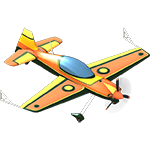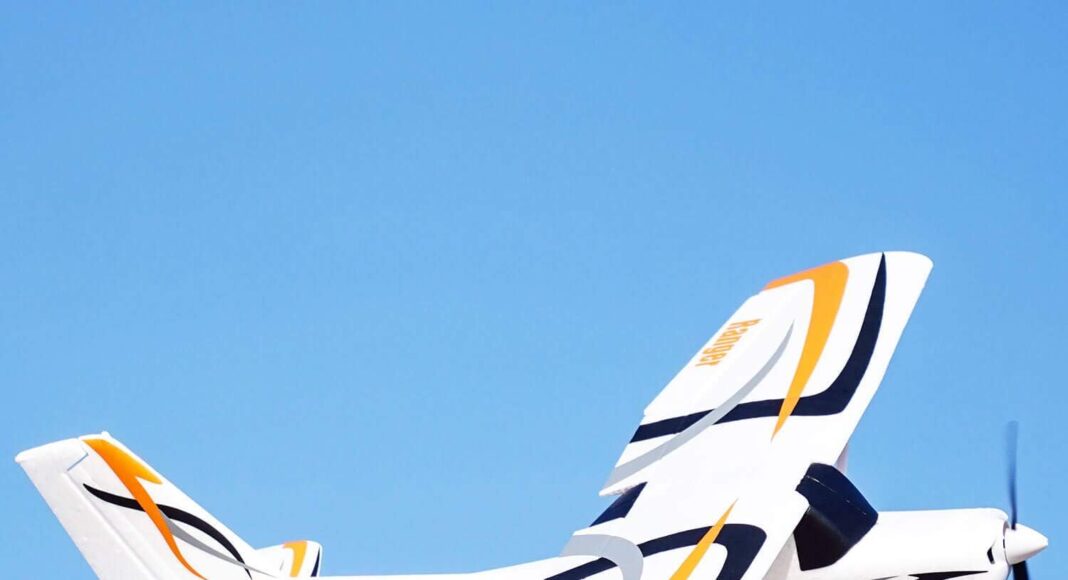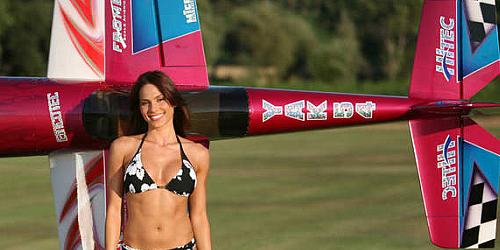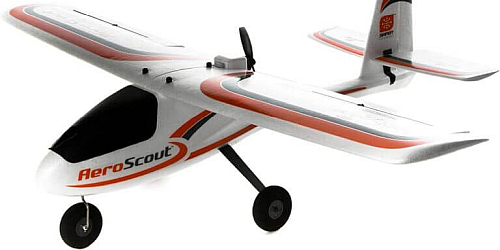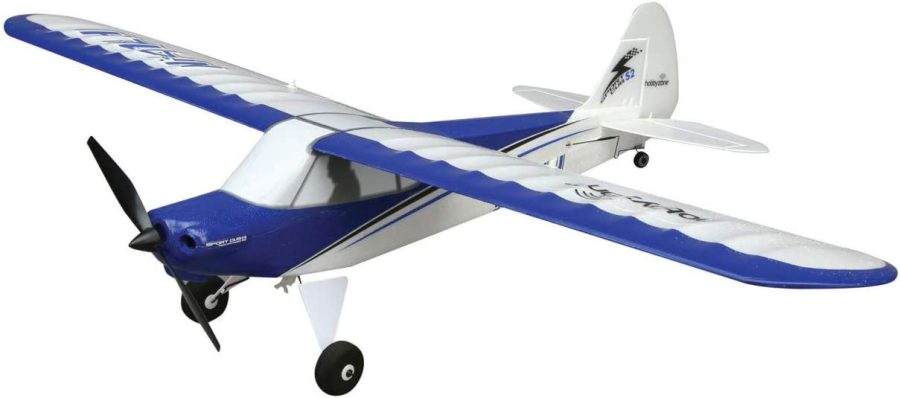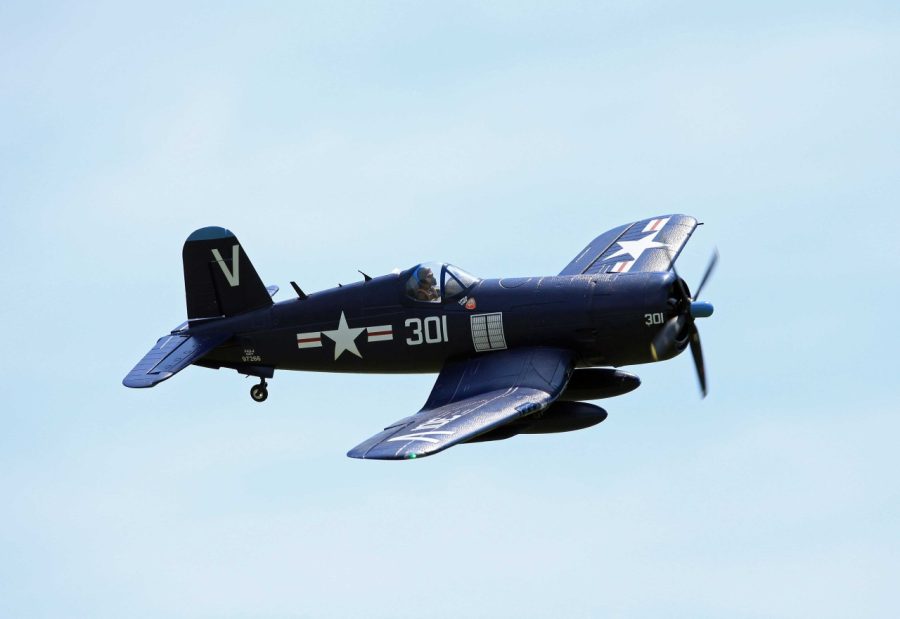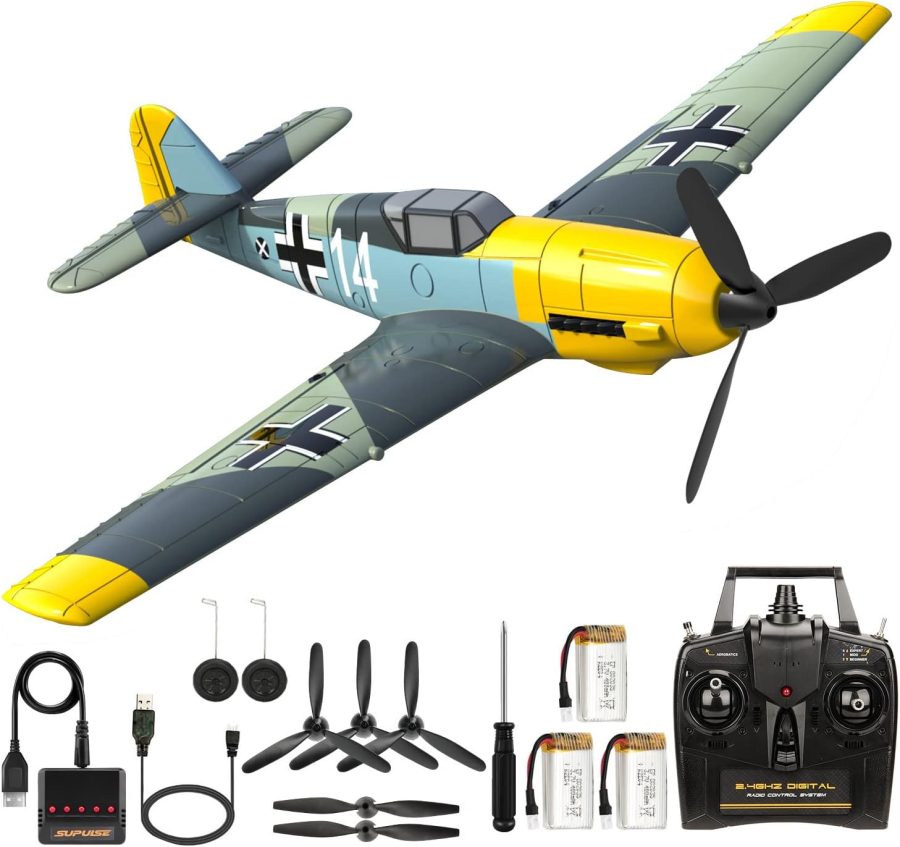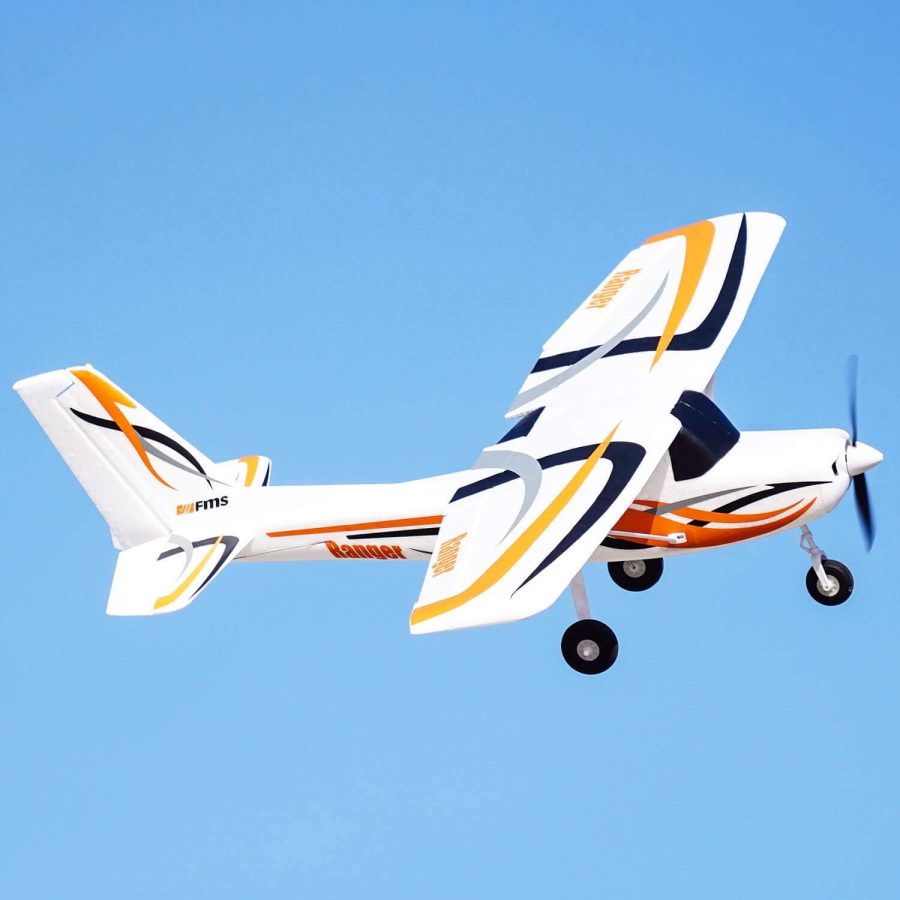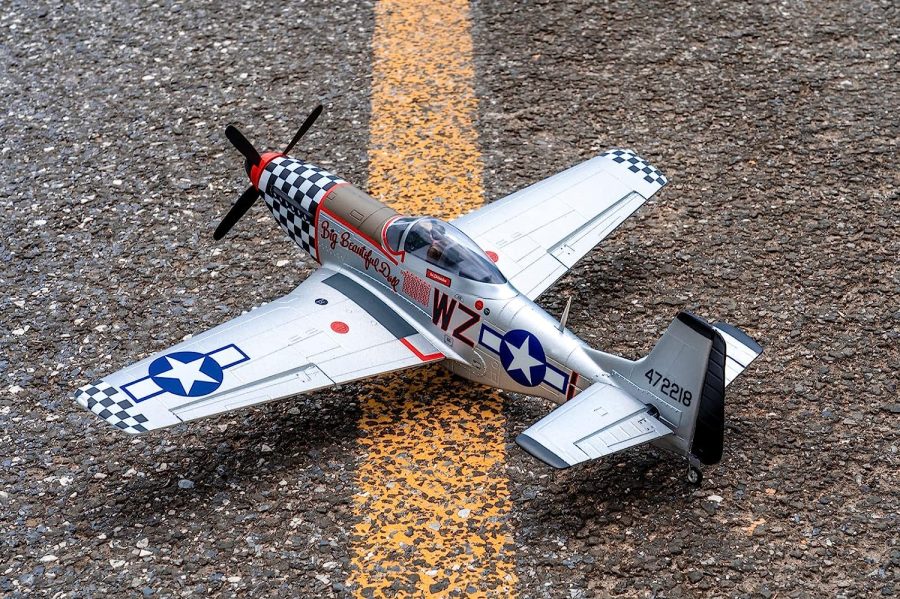Welcome to your ultimate guide to the best foam RC planes of 2024! Whether you’re a novice pilot or a seasoned flyer, we’re here to help you navigate the skies with the top foam RC planes on the market. Let’s embark on this exciting journey together, and find the perfect wingman for your aerial adventures. Ready for takeoff? Let’s dive in!
In 2024, the market is brimming with a variety of foam RC planes, each boasting unique features and capabilities. But how do you navigate this vast sea of options to find the one that’s just right for you? That’s where we come in. Our mission is to help you soar through the skies with the best foam RC plane that matches your skill level, preferences, and budget. We’ve done the heavy lifting, so you don’t have to. We’ve researched, tested, and reviewed the top foam RC planes on the market, and we’re excited to share our findings with you.
In this guide, we’ll delve into the ins and outs of foam RC planes, discuss their benefits, and explain what makes them so special. We’ll also provide you with a detailed review of the top foam RC planes of 2024, including our pick for the best overall foam RC plane.
But we won’t stop there. We’ll guide you through the buying process, highlight the common mistakes to avoid, and even provide after-purchase tips for maximum enjoyment. By the end of this guide, you’ll be well-equipped to make an informed decision and take to the skies with confidence.
So, buckle up and get ready for takeoff as we embark on this exciting journey to find the best foam RC plane for you.
Best Foam RC Planes Reviewed
HobbyZone Sport Cub S 2
This RC plane is a great choice for beginners and experienced pilots alike. It comes with SAFE technology, which includes multiple flight modes to assist new pilots and enhance the experience for seasoned flyers. The plane also includes a 4-channel control with working throttle, rudder, elevator, and ailerons. It’s compact, durable, and ready to fly right out of the box.
FMS F4U Corsair V2
This RC plane is a great choice for those who are looking for a model that is easy to control and has a high level of durability. It features a 4-channel control system, which allows for a wide range of movements and maneuvers. The plane is made from durable foam material, which can withstand crashes and rough landings. It also comes with a powerful motor and a high-capacity battery, which ensures long flight times.
VOLANTEXRC BF109
This RC plane is designed for those who are interested in warbird aircraft. It features a 4-channel control system and a powerful motor, which allows for a wide range of maneuvers. The plane is made from durable foam material, which can withstand crashes and rough landings. It also comes with a high-capacity battery, which ensures long flight times.
FMS 850mm (33.4″) Ranger
This RC plane is perfect for beginners who are just starting out in the world of RC flying. It comes with a battery and a charger, which means you can start flying right away. The plane is made from durable foam material, which can withstand crashes and rough landings. It also features a 4-channel control system, which allows for a wide range of movements and maneuvers.
HobbyZone RC Carbon Cub S 2 1.3m
This RC plane is a great choice for those who are looking for a model that is easy to control and has a high level of durability. It comes with a battery, which ensures long flight times. The plane is made from durable foam material, which can withstand crashes and rough landings. It also features a 4-channel control system, which allows for a wide range of movements and maneuvers.
Best Foam RC Plane Overall Reviewed
FMS P-51 Mustang V2
After extensive research and comparison of various models, we have determined that the FMS P-51 Mustang V2 Big Beautiful Doll stands out as the best foam RC plane overall. This P-51 Mustang RC plane is a perfect blend of historical accuracy, performance, and affordability.
The FMS P51 Mustang V2 is a 4-channel RC airplane with an 800mm (31.5 inches) wingspan. It’s designed to replicate the iconic P51 Mustang, a World War II fighter plane known for its speed, agility, and power. This RC plane is an improved version 2 model, featuring a more scaled-looking 4-blade propeller, scaled landing gear, and added fuel tank for a more realistic appearance.
One of the key features of this plane is the Reflex V2 flight controller. This system is user-upgradeable and can be reprogrammed with different model files via simple software. This allows pilots to use the same flight control unit as they progress to different aircraft, making it a great investment for both beginners and experienced flyers.
The FMS P51 Mustang V2 is equipped with a brushless motor (3015kv1700), a 20A ESC, and 9g servos preinstalled. It’s capable of flying around 420g, providing a powerful and thrilling flight experience. It’s recommended to use a 4+ channel radio system and a 7.4v 1300mAh Li-ion battery with a JST plug for optimal performance.
This plane comes as a PNP (Plug and Play) version, meaning it includes everything needed to get the model started, except for the batteries for the transmitter. It’s fully assembled, allowing you to get the plane off the ground within minutes of unboxing.
The FMS P51 Mustang V2 is not just a toy, but a miniature piece of aviation history that you can control. Its high-quality construction, advanced features, and impressive performance make it the best foam RC plane overall. Whether you’re a beginner looking to get into the hobby or an experienced pilot looking for a new challenge, the FMS P51 Mustang V2 is a fantastic choice.
What Is a Foam RC Plane, Anyway?
If you’re new to the world of remote-controlled (RC) aviation or even an experienced hobbyist, you’ve likely come across the term “foam RC plane.” But what exactly is it? Let’s delve into the specifics.
A foam RC plane is a type of model aircraft that’s primarily constructed from foam. This material choice might seem surprising at first, especially when you consider the traditional image of model planes being made from balsa wood or plastic. However, foam offers several unique advantages that make it an excellent choice for RC planes.
Foam RC planes are typically made from either Expanded Polystyrene (EPS), Expanded Polyolefin (EPO), or Depron. These types of foam are lightweight, durable, and flexible, making them ideal for the construction of RC planes. They can withstand the occasional crash landing that’s inevitable in the world of RC flying, and they’re also easy to repair, often requiring just some glue to get them back in the air.
These planes come in a variety of sizes, shapes, and designs, from small indoor flyers to larger outdoor models. They can be simple, with minimal controls for beginners, or complex, with multiple channels and advanced flight capabilities for experienced pilots.
In essence, a foam RC plane is a blend of engineering and artistry, a testament to the advancements in RC technology. It’s a tool for fun, a platform for learning, and for many, a gateway into the thrilling world of aviation. Whether you’re a novice looking to take to the skies for the first time or a seasoned pilot seeking a new challenge, there’s a foam RC plane out there that’s just right for you.
What Makes Foam RC Planes So Special?
Foam RC planes hold a unique charm that sets them apart in the world of remote-controlled aviation. Their distinct features and benefits make them a favorite among both novice and experienced pilots. But what exactly makes them so special? Let’s delve into the specifics.
Lightweight and Durable: Foam RC planes are incredibly lightweight, thanks to the foam construction. This lightness allows for more agile maneuvering and easier control in the air. But don’t let their weight fool you. These planes are also highly durable. They can withstand crashes and impacts that would typically damage other types of RC planes. This resilience makes them an excellent choice for beginners still mastering their piloting skills.
Ease of Repair: Accidents happen, especially in the world of RC flying. However, foam RC planes are notably easy to repair. Often, minor damages can be fixed with some glue or tape, and you’re back in the air. This ease of repair extends the life of the plane and ensures you get the most out of your investment.
Versatility: Foam RC planes come in a wide variety of designs and sizes, from scale models of real aircraft to aerobatic planes designed for stunts. This versatility means there’s a foam RC plane to suit every interest and skill level.
Affordability: Compared to their counterparts made from other materials, foam RC planes are generally more affordable. This cost-effectiveness makes the hobby more accessible to a broader range of enthusiasts.
Performance: Despite their lightweight construction and affordability, foam RC planes don’t skimp on performance. They offer excellent flight characteristics, with some models capable of high speeds and impressive aerobatic capabilities.
In conclusion, foam RC planes are special due to their unique combination of durability, ease of repair, versatility, affordability, and performance. Whether you’re a beginner looking for a forgiving model to learn on, or an experienced pilot seeking a high-performance aircraft for thrilling aerobatics, there’s a foam RC plane out there that’s perfect for you.
Who Should Get a Foam RC Plane
If you’ve ever gazed at the sky, watching a bird soar effortlessly and wished you could experience the same freedom, a foam RC plane might just be your ticket to that dream. But who exactly stands to benefit the most from owning one of these fantastic flying machines? Let’s find out.
- Beginners and Novice Flyers: Foam RC planes are an excellent choice for those just dipping their toes into the world of RC aviation. Their lightweight construction and inherent durability make them forgiving for new pilots still learning the ropes. A minor crash that might severely damage a plane made of other materials often leaves a foam RC plane unscathed, ready for another flight.
- Experienced RC Enthusiasts: Even if you’re a seasoned RC pilot, don’t overlook foam RC planes. Their advanced models offer a plethora of features that can challenge and engage even the most experienced flyers. Plus, their resilience makes them ideal for trying out daring new maneuvers without the fear of costly repairs.
- Educators and Students: Foam RC planes are not just about fun; they’re also educational. They offer a hands-on approach to learning about aerodynamics, physics, and engineering. Teachers can use these planes as teaching aids, and students can engage in a practical, enjoyable form of learning.
- Budget-Conscious Buyers: If you’re looking for an affordable entry point into RC flying, foam RC planes are a great option. They offer a wide range of models to suit various budgets without compromising on quality or performance.
- Environmentally Conscious Individuals: Foam RC planes, particularly those made from EPS or EPP, are more environmentally friendly than their plastic or metal counterparts. They consume less energy in production and are easier to recycle, making them a great choice for those conscious of their environmental footprint.
- Adventurous Spirits: If you’re someone who loves the thrill of controlling a high-speed object, performing aerial stunts, or simply enjoying the tranquility of a leisurely flight, a foam RC plane can provide hours of enjoyment.
In essence, foam RC planes are a fantastic hobby for people of all ages, skill levels, and backgrounds. Whether you’re a beginner looking to learn, an experienced flyer seeking a new challenge, an educator, a student, or someone simply looking for an exciting and rewarding pastime, a foam RC plane could be your next great adventure.
Why You Need a Foam RC Plane
If you’ve ever dreamed of taking to the skies, a foam RC plane can make that dream a reality – right in your backyard. But why should you specifically opt for a foam RC plane? Here are some compelling reasons:
1. Easy to Handle: Foam RC planes are incredibly user-friendly, making them an excellent choice for beginners. Their lightweight nature allows for easier control and maneuverability, providing a smoother flying experience.
2. Durability: Foam RC planes are known for their resilience. They can withstand crashes and impacts better than their counterparts made from other materials. This durability means you can enjoy flying without the constant worry of damaging your plane.
3. Cost-Effective: Foam RC planes are generally more affordable than models made from other materials. This cost-effectiveness makes them a great entry point for those new to the hobby, as well as a budget-friendly option for more experienced enthusiasts.
4. Easy Repairs: Accidents happen, especially when you’re learning. The good news is, foam RC planes are easy to repair. Often, minor damages can be fixed with some glue, saving you from costly replacements.
5. Versatility: Foam RC planes come in a variety of models suitable for different flying styles and environments. Whether you’re into stunt flying, racing, or simply enjoying a leisurely flight, there’s a foam RC plane out there for you.
6. Fun and Educational: Flying a foam RC plane is not just fun; it’s also educational. It can help improve hand-eye coordination, spatial awareness, and even teach principles of aerodynamics and physics.
In conclusion, a foam RC plane offers a unique blend of affordability, durability, and ease of use, making it a fantastic choice for anyone looking to dive into the exciting world of RC flying. Whether you’re a novice pilot or a seasoned flyer, a foam RC plane can provide you with countless hours of enjoyment and a rewarding hobby you can continue to grow with.
How We Chose the Top Picks
Choosing the best foam RC planes isn’t a task we take lightly. Our selection process is rigorous, thorough, and guided by several key factors that we believe are crucial in determining the quality, performance, and value of these aircraft. Here’s a look at how we arrived at our top picks:
- Quality of Material: The first thing we considered was the quality of the foam used in the construction of the RC planes. We favored planes made from durable and lightweight foam, such as EPO and EPP, which are known for their resilience and ability to withstand crashes.
- Flight Performance: We looked at how well each plane flies. This includes factors like stability, maneuverability, speed, and how well it responds to controller inputs. We tested these planes in various conditions to ensure they can handle different flying scenarios.
- Ease of Assembly: We know that our readers range from beginners to experienced flyers, so we considered how easy it is to assemble each plane. Models that come with clear instructions and require minimal assembly scored higher on our list.
- Control Range: The control range is another critical factor. We chose planes that offer a substantial control range, allowing for a more flexible and enjoyable flying experience.
- Battery Life: The longer the flight time, the better. We favored RC planes with longer battery life, ensuring you can spend more time in the air before needing a recharge.
- Value for Money: We considered the price of each plane relative to its features and performance. We aimed to include options that offer excellent value for money, regardless of whether they’re budget-friendly or high-end models.
- Customer Reviews: We also took into account the feedback and reviews from actual users of these planes. This helped us gauge the real-world performance and reliability of each model.
- Brand Reputation: Brands with a proven track record of quality and customer service were given preference. We trust companies that stand behind their products and offer good customer support.
Through this meticulous selection process, we believe we’ve identified the top foam RC planes on the market. Whether you’re a beginner or an experienced pilot, our top picks offer a blend of performance, quality, and value that we’re confident will enhance your RC flying experience.
The Ultimate Foam RC Plane Buyer’s Guide
Choosing the right foam RC plane can be a thrilling yet challenging task, especially with the myriad of options available in the market. This guide aims to simplify that process for you, whether you’re a first-time buyer or an experienced flyer looking to add a new model to your collection. Here are some key features to consider when buying the best foam RC plane:
- Type of Foam: Not all foam is created equal. EPO (Expanded PolyOlefin) and EPP (Expanded PolyPropylene) are two common types used in RC planes. EPO is lightweight and durable, making it great for beginners. EPP, on the other hand, is extremely resilient and can withstand high impacts, making it ideal for advanced flyers who perform daring maneuvers.
- Size and Weight: The size and weight of the plane will significantly impact its flight characteristics. Larger, heavier planes tend to be more stable and can handle wind better, but they may require more space to fly. Smaller, lighter models are more agile and easier to transport but can be more challenging to control, especially in windy conditions.
- Flight Time: This refers to how long the plane can stay in the air on a single charge. Most foam RC planes offer flight times between 7 to 20 minutes. Consider your flying style and how long you’d like to be in the air when choosing a model.
- Control Range: The control range is the distance within which you can control the plane. For beginners, a shorter range may be sufficient, but advanced flyers might prefer a longer range for more adventurous flights.
- Skill Level: Some foam RC planes are designed specifically for beginners, with features like self-stabilization and beginner-friendly controls. Others are built for intermediate or advanced flyers, with more complex control systems and the ability to perform aerobatic maneuvers.
- Price: Foam RC planes can range from affordable entry-level models to high-end planes with advanced features. Determine your budget beforehand and remember that while price often correlates with quality and features, it doesn’t always mean a higher-priced model is the best fit for you.
- Brand Reputation: Consider buying from a reputable brand known for quality and good customer service. Read reviews and do your research to ensure you’re getting a reliable product.
- Parts Availability: At some point, you may need to replace parts due to wear and tear or accidents. Ensure the model you choose has readily available spare parts.
In the end, the best foam RC plane for you depends on your individual needs, preferences, and flying skills. Take your time to research, compare different models, and make an informed decision.
Common Mistakes to Avoid When Buying Your First Foam RC Plane
Common Mistakes to Avoid When Buying Your First Foam RC Plane
Embarking on the journey of buying your first foam RC plane can be an exhilarating experience. However, it’s not uncommon for beginners to make a few missteps along the way. To help you navigate this process more smoothly, we’ve compiled a list of common mistakes to avoid when purchasing your first foam RC plane.
- Choosing the Wrong Plane for Your Skill Level: One of the most common mistakes is buying a plane that’s too advanced for your current skill level. While it’s tempting to go for the fastest and most agile model, it’s crucial to start with a beginner-friendly plane. These planes typically have slower speeds and more stable flight characteristics, making them more forgiving for novice pilots.
- Ignoring the Type of Foam: Not all foam is created equal. EPP (Expanded Polypropylene) and EPO (Expanded Polyolefin) are two common types of foam used in RC planes. EPP is more flexible and durable, making it ideal for beginners who might crash more often. EPO, on the other hand, is stiffer and offers a smoother flight but can be more susceptible to damage.
- Overlooking the Importance of Spare Parts: Even the most skilled pilots crash from time to time. When this happens, having access to spare parts can mean the difference between getting your plane back in the air quickly or having it grounded indefinitely. Ensure the model you choose has readily available spare parts.
- Neglecting Flight Time and Battery Life: It’s easy to get caught up in the excitement of features and design and forget about practical considerations like flight time and battery life. Remember, the larger and more powerful the plane, the quicker it will drain its battery. Look for a model that offers a balance between performance and efficient power use.
- Failing to Consider the Control Range: The control range of your RC plane determines how far it can fly without losing connection to the controller. A common mistake is not checking this specification before buying. Ensure the plane’s control range is suitable for the space you plan to fly in.
- Not Reading Reviews: Reviews from other customers can provide valuable insights into the performance and reliability of an RC plane. They can highlight potential issues that aren’t evident in product descriptions. Make sure to read reviews before making your final decision.
By avoiding these common mistakes, you can make a more informed decision and choose a foam RC plane that will provide you with many hours of enjoyable flight time. The goal is to learn and have fun, so choose wisely.
Why Trust Us
When it comes to RC planes, especially foam RC planes, we’re not just enthusiasts—we’re experts. Our team is composed of seasoned professionals who have spent countless hours in the field, piloting, testing, and reviewing a wide array of RC planes. We’ve soared through the skies with the most advanced models, and we’ve navigated the learning curve alongside beginners with entry-level planes. This hands-on experience gives us a unique perspective and an in-depth understanding of what makes a foam RC plane truly exceptional.
How We Tested
Our testing process is rigorous and comprehensive. We don’t just rely on manufacturer specifications—we put each plane through its paces. We test for durability, control responsiveness, flight stability, and overall performance under various weather conditions. We also consider the ease of assembly and maintenance, as we understand these factors significantly impact the user experience, especially for beginners.
The Reasons to Rely on Our Expertise
Our commitment to providing accurate, detailed, and trustworthy information sets us apart. We’re not here to sell you a product; we’re here to guide you towards making the best possible decision for your specific needs and preferences. We understand that what works best for one person may not work for another, and our reviews and recommendations reflect that understanding.
Moreover, we stay updated with the latest trends and advancements in the RC plane industry. This continuous learning allows us to provide you with the most current and relevant information. We’re not just resting on past knowledge; we’re constantly expanding our understanding and expertise.
In a field where technology is always advancing, trust us to keep you in the loop, to guide you, and to help you navigate the exciting world of foam RC planes. Whether you’re a first-time buyer or an experienced flyer, we’re here to ensure that your RC flying experience is nothing short of amazing.
Key Points to Remember Before Purchasing Foam RC Planes
Before you embark on the exciting journey of purchasing your foam RC plane, there are several key points you should keep in mind. These points will not only guide you in making an informed decision but also ensure you get the most out of your RC flying experience.
- Understand Your Skill Level: Foam RC planes come in a variety of models, each designed for different skill levels. If you’re a beginner, opt for a plane with stability features and easy controls. As you gain more experience, you can upgrade to more advanced models.
- Type of Foam: Not all foam is created equal. EPP (Expanded Polypropylene) and EPO (Expanded Polyolefin) are two common types used in RC planes. EPP is more flexible and durable, making it ideal for beginners. EPO, on the other hand, offers a smoother finish and is easier to paint, appealing to more experienced flyers.
- Size and Weight: The size and weight of the plane will impact its flight characteristics. Larger, heavier planes may be more stable in windy conditions, but they also require more space to fly. Smaller, lighter models are more maneuverable and suitable for confined spaces.
- Flight Time and Battery Life: The longer the flight time, the more enjoyment you’ll get from each flying session. Look for planes with a good balance between battery life and performance. Remember, you can always purchase extra batteries for extended playtime.
- Control Range: The control range refers to how far the plane can fly from the controller before losing signal. A longer range allows for more exploration and freedom in flight, but also requires a larger, open space to fly safely.
- Spare Parts Availability: Even the best pilots have occasional crashes. Ensure the model you choose has readily available spare parts. This will make repairs easier and extend the life of your plane.
- Price: While it might be tempting to go for the cheapest option, remember that quality often comes at a price. Consider it an investment in your enjoyment and potentially a lifelong hobby.
- Reviews and Recommendations: Lastly, don’t underestimate the power of reviews and recommendations. They can provide real-world insights into the plane’s performance and durability.
Remember, the best foam RC plane for you is the one that fits your skill level, meets your performance expectations, and brings you joy every time you take to the skies. Happy flying!
FAQs
In this section, we’ll address some of the most common questions that both first-time and experienced RC plane buyers often have when it comes to foam RC planes. Let’s dive in!
Why are foam RC planes a popular choice among hobbyists?
Foam RC planes are a favorite among enthusiasts due to their lightweight nature, durability, and ease of repair. They are also generally more affordable than their counterparts made from other materials, making them an excellent choice for both beginners and experienced flyers.
Are foam RC planes suitable for beginners?
Absolutely! Foam RC planes are often recommended for beginners because they are more forgiving in crashes, which are somewhat inevitable when you’re just starting out. Their lightweight nature and durability mean they can withstand minor crashes without significant damage.
How long does a foam RC plane typically last?
The lifespan of a foam RC plane can vary greatly depending on how well it’s maintained and how it’s used. With proper care and handling, a foam RC plane can provide years of flying fun. Remember, the key to longevity is regular maintenance and careful flying.
Can foam RC planes be used for racing?
Yes, they can! While foam RC planes are often associated with leisurely flying, there are models designed for speed and agility, making them suitable for racing. However, if you’re interested in competitive racing, it’s essential to choose a model specifically designed for this purpose.
How do I maintain my foam RC plane?
Maintaining your foam RC plane involves regular checks and minor repairs when necessary. This includes checking the control surfaces for secure attachment, ensuring the battery is in good condition, and checking the motor for any signs of wear or damage. More detailed maintenance tips will be covered in the “How To Care For Your Foam RC Plane” section.
Can foam RC planes fly in the wind?
While it’s possible to fly foam RC planes in light to moderate wind conditions, it’s generally more challenging due to their lightweight nature. It’s recommended to start flying in calm conditions if you’re a beginner, and as you gain more experience and confidence, you can start flying in more varied weather conditions.
You Bought It, Now What?
Congratulations on your new foam RC plane! Now that you’ve made the purchase, it’s time to dive into the exciting world of RC flying. But where do you start? Here’s a step-by-step guide to help you get off the ground and into the sky.
1. Unbox with Care: The first step is to carefully unbox your new foam RC plane. Remember, these models can be delicate, so handle with care to avoid any damage. Check to ensure all parts are included as per the manual.
2. Read the Manual: It might be tempting to jump right in, but take some time to read through the manual. It will provide you with valuable information about your specific model, including assembly instructions, control functions, and safety precautions.
3. Assemble the Plane: If your foam RC plane requires assembly, follow the instructions in the manual. Some models come ready-to-fly (RTF), while others might need minor assembly. If you’re unsure about anything, don’t hesitate to seek help from experienced flyers or online forums.
4. Charge the Battery: Before you can take to the skies, you’ll need to charge the battery. Charging times can vary, so refer to your manual for specific instructions. Always use the charger provided by the manufacturer to avoid any potential issues.
5. Get to Know Your Controller: Spend some time familiarizing yourself with the controller. Understanding how each control affects the plane’s movement is crucial for successful flights. Practice using the controls while the plane is on the ground to get a feel for how they work.
6. Choose a Suitable Flying Area: For your first flight, choose a wide, open space free from obstacles like trees, power lines, and buildings. A local park or an RC flying field are great options. Always ensure you’re following local laws and regulations regarding RC flying.
7. Conduct a Pre-Flight Check: Before each flight, check the plane for any signs of damage. Ensure the controls are responding correctly and the battery is fully charged. This step is crucial for safe flying.
8. Take Off: With everything checked and ready, it’s time for takeoff! Start with short, controlled flights, gradually increasing your distance and altitude as you become more comfortable.
9. Practice, Practice, Practice: Mastering RC flying doesn’t happen overnight. Be patient with yourself, practice regularly, and don’t be discouraged by any mishaps. With time, you’ll gain confidence and skill.
10. Have Fun!: Most importantly, remember to have fun. RC flying is a thrilling hobby, and your new foam RC plane is your ticket to countless hours of enjoyment.
How To Care For Your Foam RC Plane
Taking care of your foam RC plane is crucial to ensure its longevity and optimal performance. Here are some key tips to help you maintain your foam RC plane:
- Regular Cleaning: After each flight, make sure to clean your RC plane. Use a soft, dry cloth to wipe off any dirt or debris from the body and wings. Avoid using harsh chemicals or abrasive materials that could damage the foam.
- Proper Storage: When not in use, store your foam RC plane in a cool, dry place. Extreme temperatures and humidity can warp the foam and affect the plane’s performance. If possible, hang the plane or place it on a shelf to prevent any pressure points that could deform the foam.
- Battery Care: Always remove the battery after use to prevent any potential leakage or damage. Charge the battery fully before each flight, but avoid overcharging as it can reduce the battery’s lifespan.
- Check for Damage: Regularly inspect your foam RC plane for any signs of damage. Look for cracks or deformities in the foam. Minor damage can often be repaired with foam-safe glue or tape. However, significant damage may require replacement parts.
- Update Software: If your foam RC plane has a digital component, ensure the software is up-to-date. Regular updates can improve the plane’s performance and fix any potential bugs.
- Practice Safe Flying: Avoid flying in adverse weather conditions such as high winds or rain, which can damage your foam RC plane. Also, try to avoid crashes by practicing in open spaces until you’re confident in your flying skills.
- Regular Maintenance: Lubricate moving parts regularly to reduce friction and prevent wear and tear. Always use products recommended by the manufacturer to avoid damaging the foam or other components.
A well-maintained foam RC plane not only lasts longer but also provides a better flying experience. So, take the time to care for your plane, and it will reward you with many hours of enjoyable flight.
Conclusion
Choosing the right foam RC plane can significantly enhance your flying experience, whether you’re a beginner just dipping your wings into this hobby or an experienced pilot looking for your next challenge. The key is to understand your needs, preferences, and skill level, and match them with the right model.
In this guide, we’ve explored some of the best foam RC planes available in 2025, delving into their features, strengths, and areas for improvement. We’ve also provided you with a comprehensive buyer’s guide to help you make an informed decision.
Remember, the best foam RC plane for you is the one that meets your specific needs and fits within your budget. It’s not always about having the most advanced or expensive model, but rather finding a plane that offers the right balance of performance, durability, and ease of use.
As you embark on this exciting journey, remember that flying RC planes is about more than just the plane itself. It’s about the thrill of flight, the joy of mastering a new skill, and the sense of community that comes with being part of the RC plane world.
So, take your time, do your research, and most importantly, have fun. The sky is truly the limit when it comes to what you can achieve with your foam RC plane. Happy flying!

